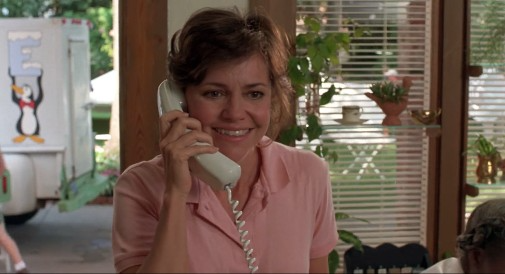
Sally Field Recalls ‘Steel Magnolias’ Director Being a ‘Real Son of a Bitch’ to Newcomer Julia Roberts. The Oscar winner says Dolly Parton used “the most vulgar humor” to counter Herb Ross’ treatment of the young actressSally Field, Dolly Parton and Julia Roberts attend the “Steel Magnolias” New York City premiere in 1989. Sally Field, Dolly Parton and Julia Roberts attend the “Steel Magnolias” New York City premiere in 1989. Sally Field is peeling back the layers on one of her most beloved films: 1989’s “Steel Magnolias.”
The Oscar-winning actress starred alongside Olympia Dukakis, Shirley MacLaine, Daryl Hannah, Dolly Parton and then-newcomer Julia Roberts in the Herb Ross feature. Retelling stories from the set in an interview with Vulture published Tuesday, Field remembered director Ross being particularly “hard” on Roberts — “very, very, very hard on Julia” — because “he could be a real son of a bitch.”Field explained that when it came to her own role in the movie, Ross “was pretty much giving me the freedom to do whatever.” But it was apparently just the opposite for Roberts.“If you ever talk to Julia, she’ll tell you,” Field continued. “We would all rally around Julia, because she was the baby. She was sort of the newcomer. And she was wonderful, and he just picked on her. It was awful.”

Parton in particular elected to use her own brand of wit to get back at Ross. Field added, “Some people just need to have somebody they pick on. But we all came to her aid, and I remember Dolly once just turned on him — always with humor, but usually the most vulgar humor you ever heard so that it was like, you just literally don’t have a leg to stand on.”When pressed for why she thought Ross didn’t attempt the same behavior with her, Field was straight-forward: “Because he dared not.” “I mean, I don’t mind notes, but I will argue if it doesn’t make sense to me. But if you’re going to be mean to me, then you’re going to find a warrior. I may be small, but you don’t want to do that,” she added.
Carol Sutton, ‘Steel Magnolias’ and ‘Lovecraft Country’ Actress, Dies at 76 of Complications From COVID-19. Field starred as M’Lynn, a mother faced with one of the worst fates possible: her daughter, Shelby (played by Roberts), has died of complications related to brittle diabetes. Bereft with grief, M’Lynn has her friends to lean on: Truvy (Parton), Ouiser (MacLaine), Clairee (Dukakis) and Annelle (Hannah).
The movie boasts what is arguably one of Field’s most memorable scenes of her career: a heart-wrenching monologue at the cemetery after Shelby is buried. As her friends encircle her, Field moves swiftly from sadness to overwhelming rage. In one breath she says, “I was there when that wonderful creature drifted into my life, and I was there when she drifted out,” before she yells, “I want to know why!”“No, it’s not supposed to happen this way. I’m supposed to go first!” she yells. “I just want to hit something, hit it hard!”Field told Vulture, as she has said before, that the cemetery scene was one reason she took the role in the first place. “I mean, quite obviously, it is a humdinger of a scene. But that scene was the crux of the film, because it is about loss and sadness and grief and rage, but ultimately it’s about friendship. It’s about these women who hang with her,” she said.
“Every step of the journey she takes in that speech — she walks up and down the dirt road of the cemetery, and they’re right there with her, feeling it with her, and ultimately they make her laugh,” Field continued. “It’s about the very best of what women friends are.”The actress was quick to praise the actresses who played those friends. She said that filming the scene was emotional because “we had this dazzling cast who were so loving and so supportive, and we had become so incredibly close. They were all crying off-camera. Then, when I was off-camera for them, I continued to cry.”
While the scene is one that many fans of the movie think of immediately, Field admitted that to her, it’s not necessarily the biggest part of the film. She said, “Certainly that’s one of them. But to me, I don’t think one line or another is why the scene is so powerful. I think it is the whole accumulation of colors that are built one on top of the other in the scene.”
